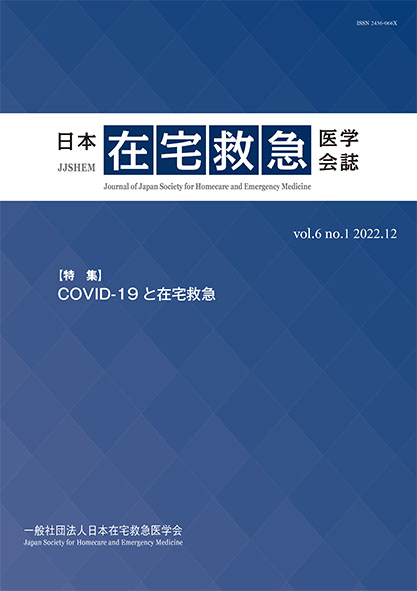Volume 6, Issue 1
Displaying 1-9 of 9 articles from this issue
- |<
- <
- 1
- >
- >|
Contents
-
2022Volume 6Issue 1 Pages 0
Published: December 31, 2022
Released on J-STAGE: March 04, 2023
Download PDF (1027K)
Original articles
-
Article type: Original
2022Volume 6Issue 1 Pages 1-8
Published: December 31, 2022
Released on J-STAGE: March 04, 2023
Download PDF (1682K)
Case reports
-
Article type: case-report
2022Volume 6Issue 1 Pages 9-15
Published: December 31, 2022
Released on J-STAGE: March 04, 2023
Download PDF (1388K)
Activity reports
-
Article type: Activity report
2022Volume 6Issue 1 Pages 16-19
Published: December 31, 2022
Released on J-STAGE: March 04, 2023
Download PDF (1633K)
Original articles
-
Article type: Original
2022Volume 6Issue 1 Pages 22-29
Published: December 31, 2022
Released on J-STAGE: March 04, 2023
Download PDF (1862K)
Activity reports
-
Article type: Activity report
2022Volume 6Issue 1 Pages 30-33
Published: December 31, 2022
Released on J-STAGE: March 04, 2023
Download PDF (1566K) -
Article type: Activity report
2022Volume 6Issue 1 Pages 34-36
Published: December 31, 2022
Released on J-STAGE: March 04, 2023
Download PDF (1489K) -
Article type: Activity report
2022Volume 6Issue 1 Pages 37-42
Published: December 31, 2022
Released on J-STAGE: March 04, 2023
Download PDF (1643K)
Editorial note
-
2022Volume 6Issue 1 Pages 44
Published: December 31, 2022
Released on J-STAGE: March 04, 2023
Download PDF (1098K)
- |<
- <
- 1
- >
- >|
